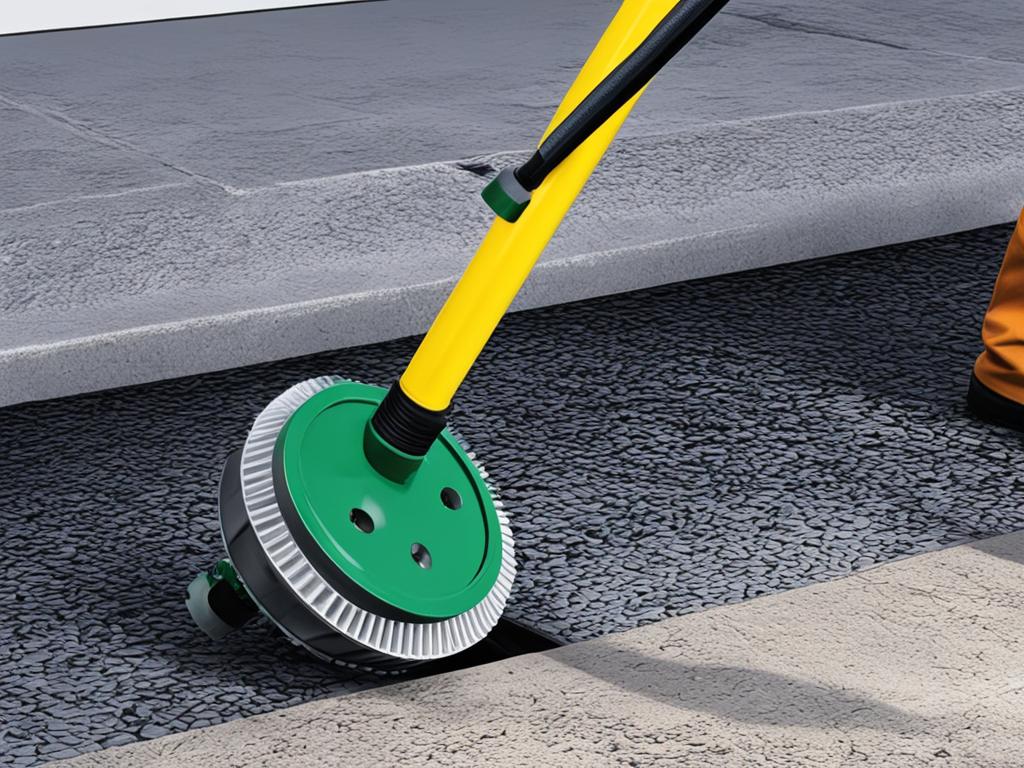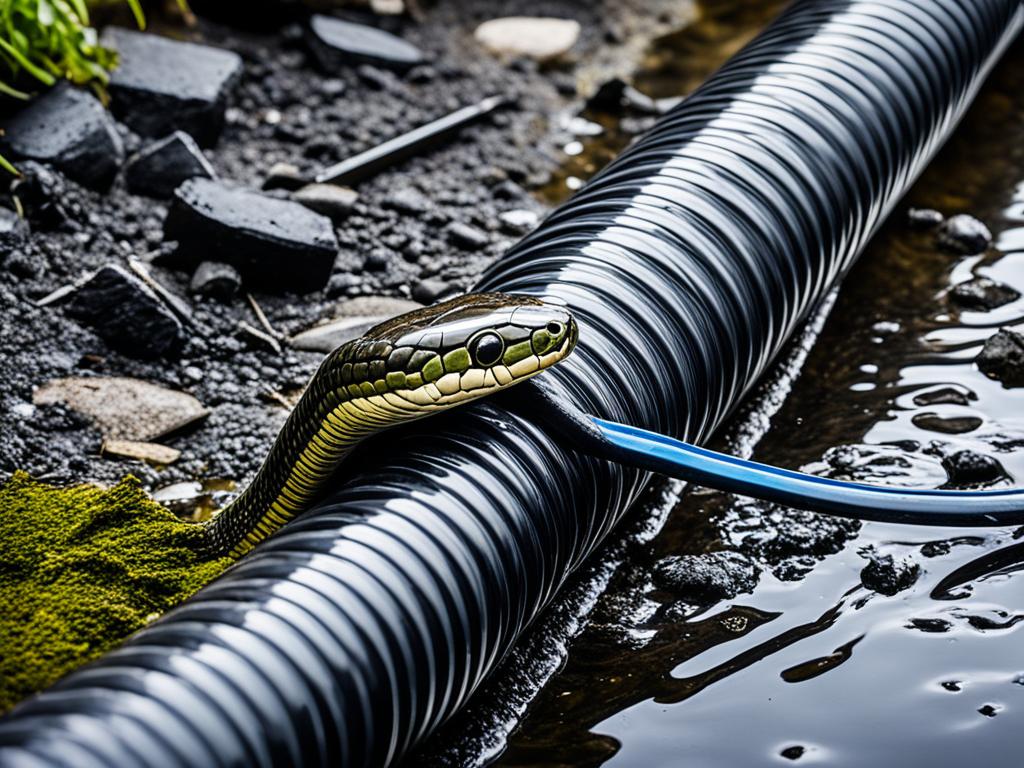When faced with a stubborn drain clog, it’s essential to have the right tools on hand. Two common options for clearing drain clogs are the flat sewer rod and the snake. Both tools have their advantages and can effectively tackle blockages in your plumbing system.
A drain snake is a versatile tool consisting of a long, flexible coiled wire with a corkscrew end. It is commonly used for sinks and bathtubs, while a specialized tool called a closet auger is recommended for clogged toilets. By inserting the snake into the drain and turning the crank, you can break down or pull out the blockages. On the other hand, a flat sewer rod is a flexible rod with a pointed end that can be pushed through drains to clear clogs.
When deciding between a flat sewer rod and a snake, it’s important to consider several factors. The type and severity of the clog play a role in determining which tool will be most effective. Additionally, the size of the drain and your personal preference should be taken into account.
Key Takeaways:
- Both flat sewer rods and snakes are effective tools for clearing drain clogs.
- A drain snake is suitable for sinks and bathtubs, while a flat sewer rod is more versatile.
- The decision between the two tools depends on factors such as the type and severity of the clog, the size of the drain, and personal preference.
- Avoid using chemical drain cleaners while using these tools.
- For more complex clogs or fragile pipes, professional assistance may be necessary.
How to Use a Drain Snake Effectively
If you’re dealing with stubborn clogs in your drains, a drain snake can be a lifesaver. This versatile tool is designed to navigate through pipes, break down blockages, and restore proper drainage. By using a drain snake correctly, you can effectively clear clogs and avoid the hassle of calling a plumber. Here’s a step-by-step guide on how to use a drain snake effectively:
- Prepare the area: Before you begin, make sure to remove any items around the drain area and protect yourself by wearing rubber gloves and safety goggles.
- Insert the drain snake: Feed the end of the coiled wire into the drain and guide it carefully through the pipe. Use gentle but firm pressure to push the snake further into the drain.
- Turn the crank: Once the drain snake is inserted, turn the crank clockwise to activate the coiled wire. This motion will help break down the clog or snag it for removal.
- Navigate through the drainpipe: As you turn the crank, be sure to guide the drain snake through the curves and corners of the drainpipe. The flexibility of the wire allows it to navigate these obstacles while still exerting enough force to clear the clog.
- Remove the drain snake: Once you feel that the clog has been cleared, slowly retract the drain snake from the drain. Be careful not to rush this process to avoid any potential splashing or damage.
- Check the drainage: After removing the drain snake, run water down the drain to test if the clog has been completely cleared. If the water flows smoothly, you have successfully cleared the clog.
Remember, when using a drain snake, it’s essential to follow safety precautions and avoid using drain cleaners or chemicals simultaneously. These substances can be harmful and may not effectively clear the clog. If you’re dealing with a clogged toilet, it’s recommended to use a closet auger with a rubber coating to prevent any damage to the porcelain. Repeat the snaking process if necessary until the clog is completely cleared, and the water starts to drain again.
To give you a visual guide on how to use a drain snake effectively, here’s an image illustrating the steps:

Now that you know how to use a drain snake effectively, you can confidently tackle clogged drains and restore proper drainage in your home.
Advantages and Disadvantages of Using a Flat Sewer Rod
A flat sewer rod is a highly versatile tool for effectively removing clogs from drains. Its unique flat design allows it to easily navigate through pipes, effortlessly pushing through or breaking up obstructions in the way. This makes it particularly effective for removing common clog-causing materials, such as hair and debris.
One of the key advantages of using a flat sewer rod is that it is generally less abrasive compared to a drain snake. This reduces the risk of causing damage to the pipes during the cleaning process, giving you peace of mind. In addition, flat sewer rods are often more affordable than drain snakes, making them a cost-effective choice for homeowners and plumbers alike. Plus, their slim and compact design makes them easy to store and transport.
However, it’s essential to note that flat sewer rods may not be as effective when dealing with larger or more stubborn blockages, such as tree roots. In these situations, a drain snake or seeking professional assistance may be necessary to fully resolve the issue. Nevertheless, for most common clogs, a flat sewer rod is a reliable and efficient solution.
Some advantages of using a flat sewer rod include:
- Effective removal of common clog-causing materials
- Less abrasive compared to drain snakes, reducing the risk of pipe damage
- Affordable and budget-friendly option
- Compact and easy to store
However, there are a few limitations to consider:
- May not be as effective for larger or more stubborn blockages
- Requires additional tools or professional assistance for certain types of clogs
Overall, a flat sewer rod is a valuable tool in your sewer cleaning equipment arsenal. Its versatility, affordability, and ease of use make it an excellent choice for tackling most drain clogs. Remember to assess the nature of the clog and consider consulting a professional if needed.

Choosing the Right Tool for Your Drain Clogs
When faced with drain clogs, it’s essential to choose the right tool for the job. Two popular options are the flat sewer rod and the drain snake. Both tools have their advantages and can effectively clear clogs from drains, but there are differences to consider.
A drain snake is an excellent choice for sink and bathtub clogs. It features a long, flexible coiled wire with a corkscrew end that can break down or pull out blockages. On the other hand, a flat sewer rod is a more versatile option that can handle a variety of clog-causing materials. Its flat and flexible design allows it to navigate through pipes and push through or break up obstructions.
However, if you’re dealing with larger or more stubborn blockages, a drain snake may be the better tool. Its strength and ability to follow the curves and corners of drainpipes make it highly effective in such situations. It’s important to note that while using these tools, wearing protective gear like rubber gloves and safety goggles is essential. Additionally, it’s advisable to avoid using chemicals when snaking or using a flat sewer rod.
In some cases, professional assistance may be necessary, especially if the clogs are more complex or the pipes are older and fragile. Ultimately, choosing the best tool for clearing drain clogs depends on the type and severity of the clog, the size of the drain, and personal preference. Consider the specifics of your situation and make an informed decision that meets your needs and preferences.
FAQ
What is the difference between a flat sewer rod and a snake?
Which tool is better for clearing drain clogs, a flat sewer rod or a snake?
How do I use a drain snake effectively?
What are the advantages and disadvantages of using a flat sewer rod?
How do I choose the right tool for clearing drain clogs?
Source Links
- https://www.protoolreviews.com/difference-between-drain-snake-drain-auger/
- https://www.indeepplumbing.com.au/hydro-jetting-vs-snaking-best-drain-cleaning-experience/
- https://todayshomeowner.com/plumbing/guides/how-to-use-drain-snake/
